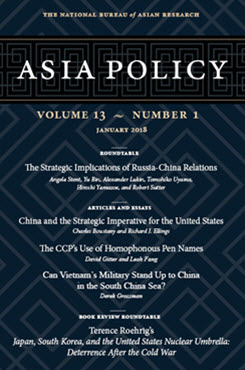Can Vietnam's Military Stand Up to China in the South China Sea?
This article examines Vietnam’s warfighting capabilities for defending its disputed claims with China in the South China Sea.
EXECUTIVE SUMMARY
MAIN ARGUMENT
Vietnam’s military modernization is increasingly focused on deterring China from seizing disputed territory in the South China Sea. By developing and fielding select capabilities—including Kilo-class submarines, Su-30MK2 maritime strike fighters, a network of anti-access missiles, and other weapon systems—Hanoi has likely achieved its core objective of convincing Beijing of the hardships it would face in a military conflict against Vietnam in the South China Sea. Nevertheless, if deterrence fails because Beijing believes it can mitigate the substantial but reasonable risks, then Vietnam is probably incapable of sustaining an extended, large-scale, or high-intensity conventional conflict in the region. This conclusion is supported by an analysis of its evolving warfighting doctrine in the air and sea domains, lack of jointness and unrealistic training activities, and shortcomings in the Vietnamese military’s maritime domain awareness capabilities and weapon systems interoperability.
POLICY IMPLICATIONS
- U.S. policymakers should seek specific areas of cooperation and collaboration with Vietnam in the defense and military spheres that would enhance Hanoi’s warfighting capabilities. For example, the U.S. could pursue closer collaboration on coastal radar, satellite and other communications systems, maritime surveillance aircraft (including unarmed drones), and naval patrol craft.
- A dramatically reduced role for Washington in the Asia-Pacific would greatly increase the prospects of China employing bullying tactics against Vietnam. Hanoi could respond by accelerating and expanding its own military modernization efforts. Yet it is equally plausible that Hanoi would instead simply seek ways to accommodate Chinese demands, calculating that an arms race would be destabilizing and unwinnable. Neither scenario is in the strategic interests of the U.S. or Vietnam.
- Through sustained U.S. leadership in the region, the U.S. and Vietnam should deepen their burgeoning defense partnership to ensure that Hanoi stands a better chance in a significant military confrontation with China.
About Asia Policy
Asia Policy is a peer-reviewed scholarly journal presenting policy-relevant academic research on the Asia-Pacific that draws clear and concise conclusions useful to today’s policymakers. Asia Policy is published quarterly in January, April, July, and October and accepts submissions on a rolling basis. Learn more


